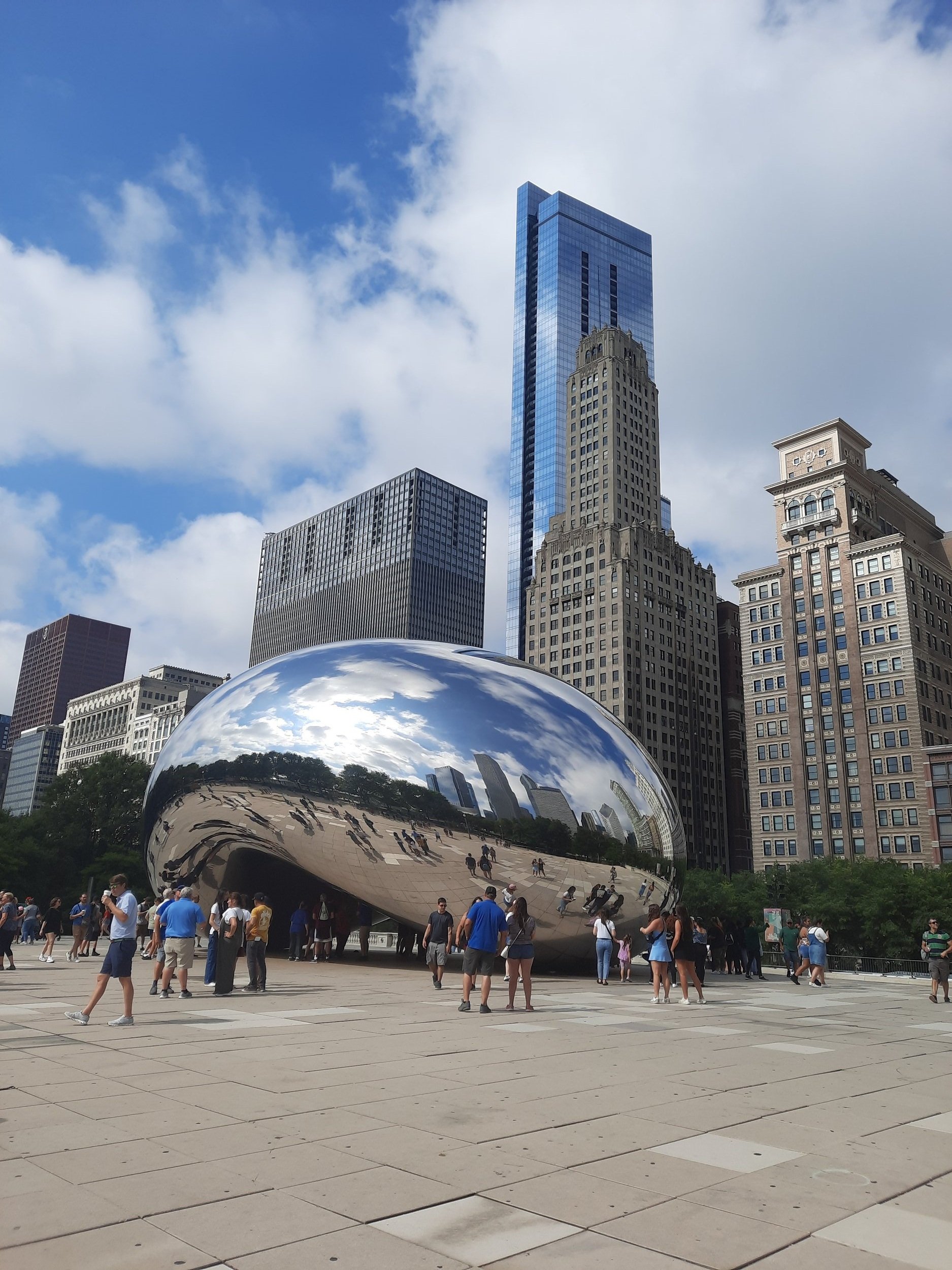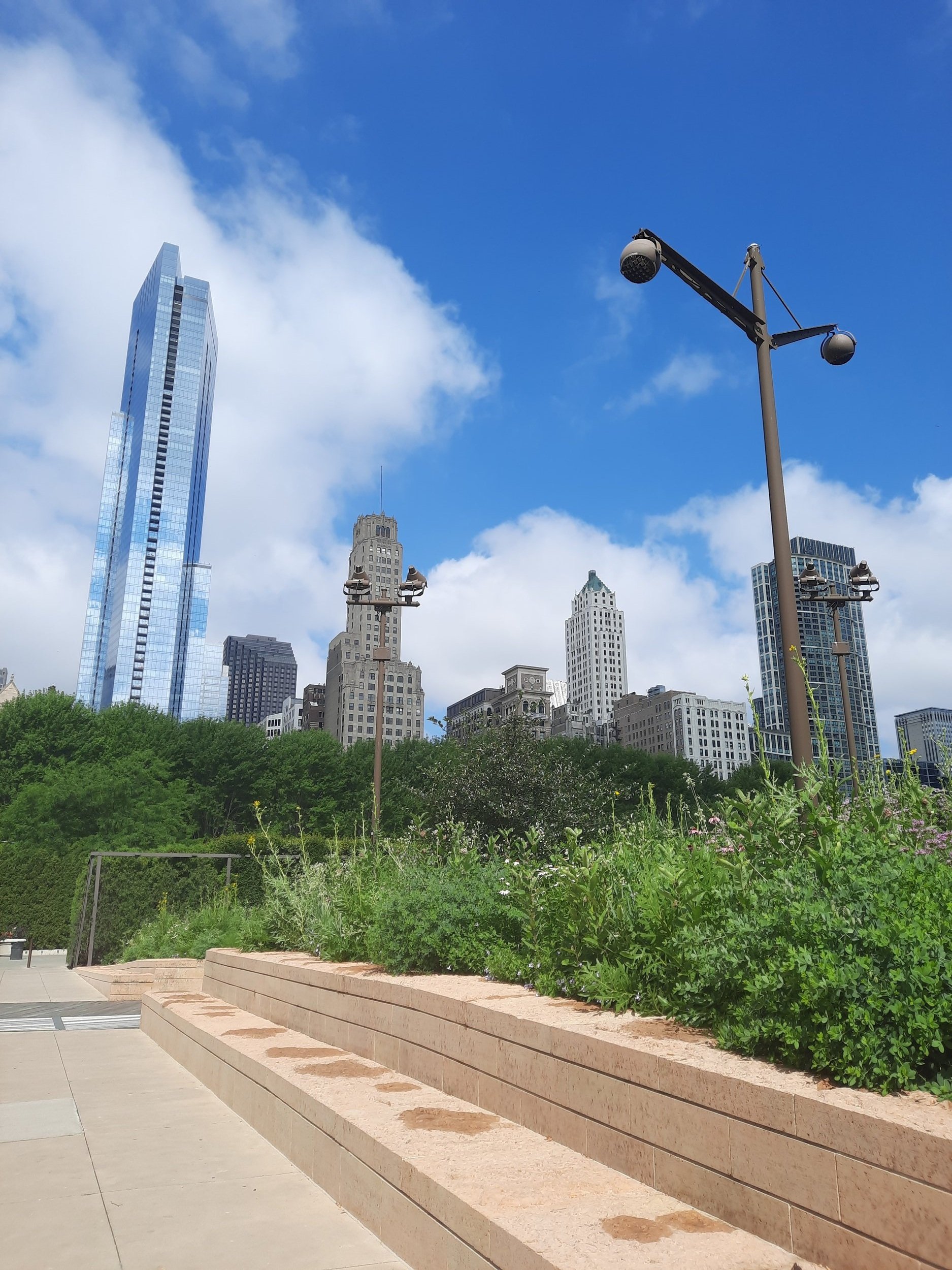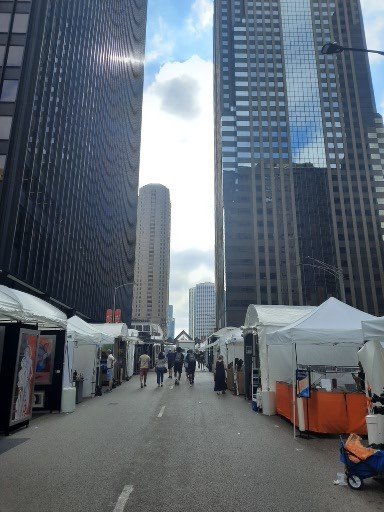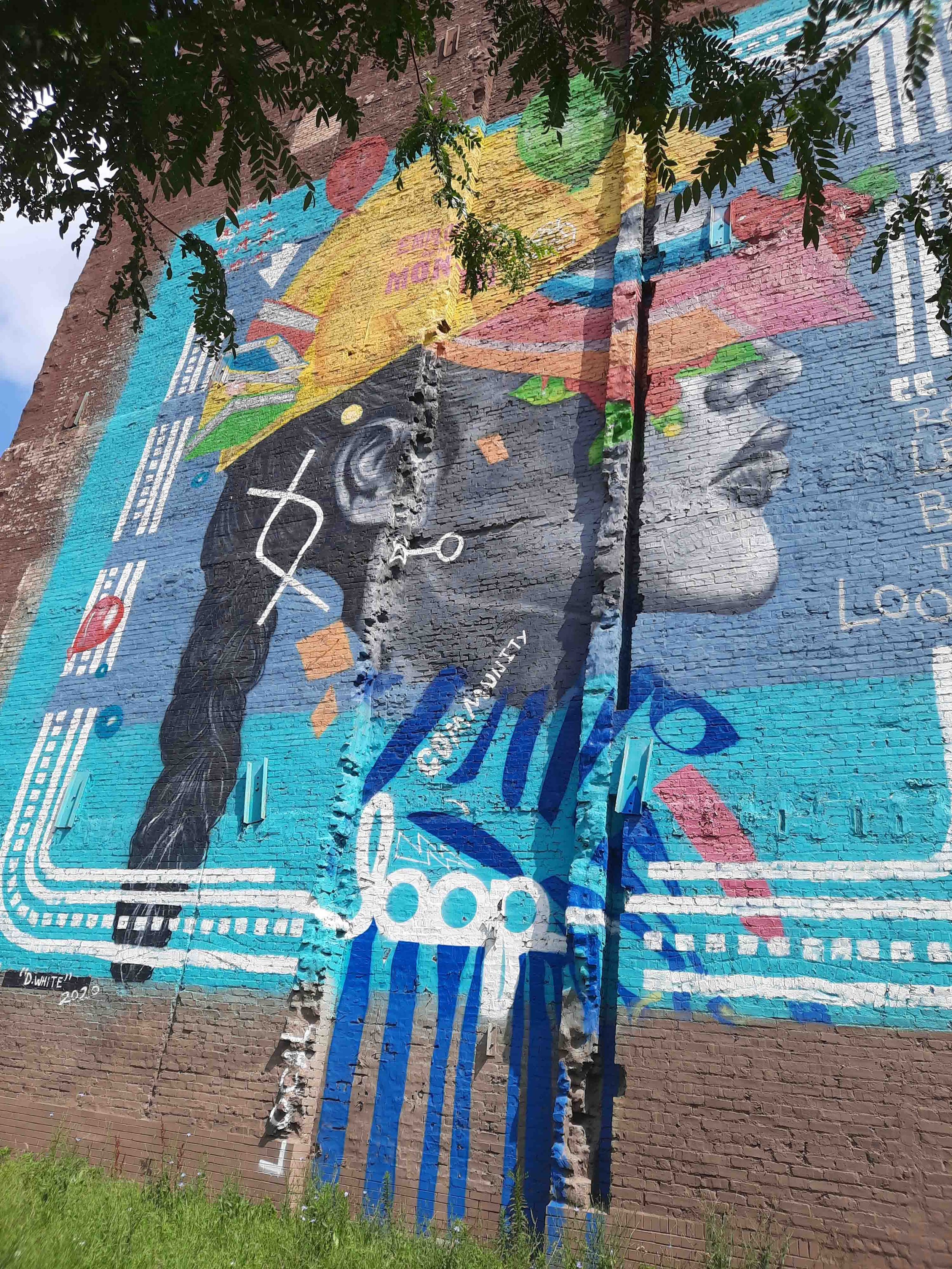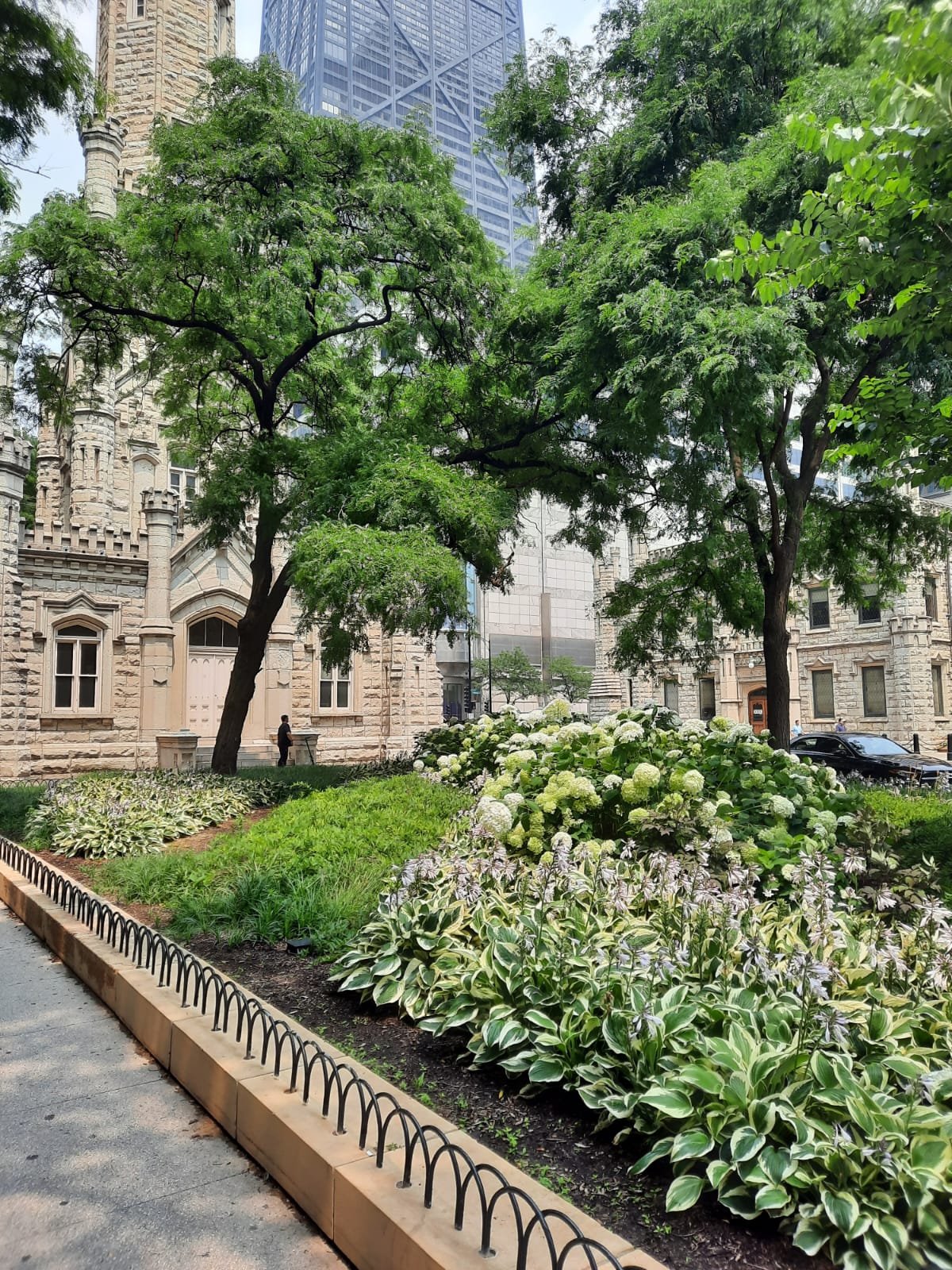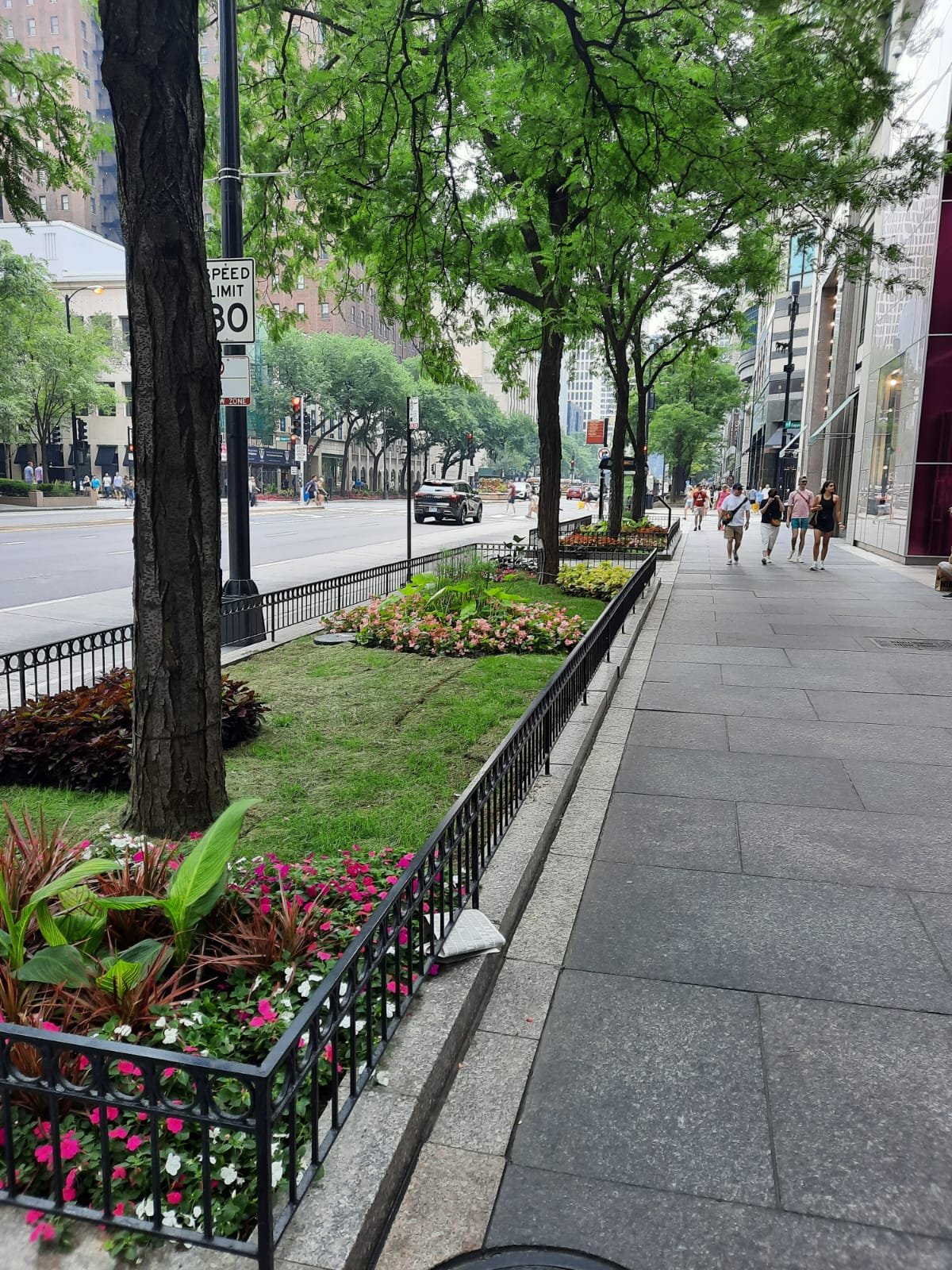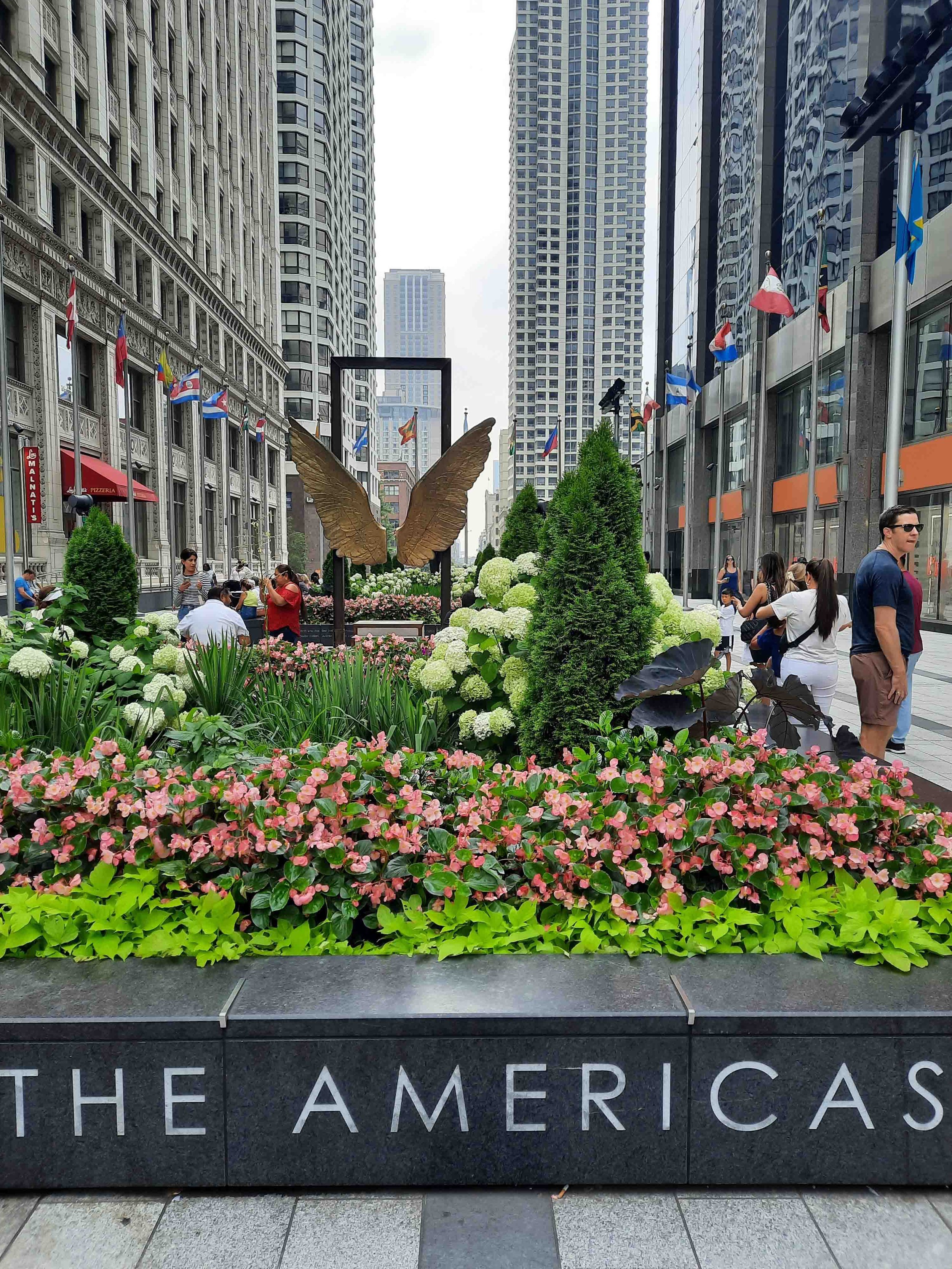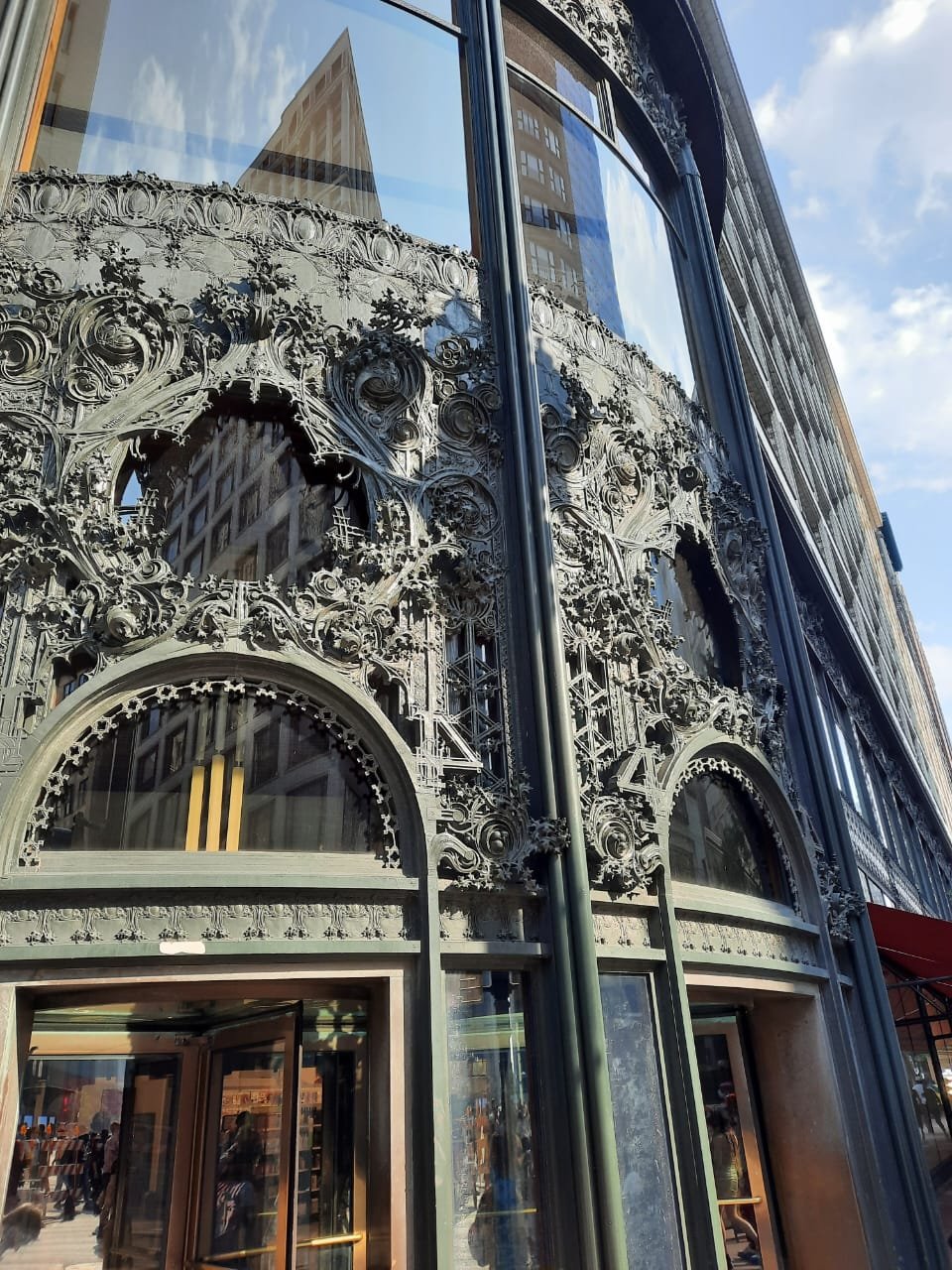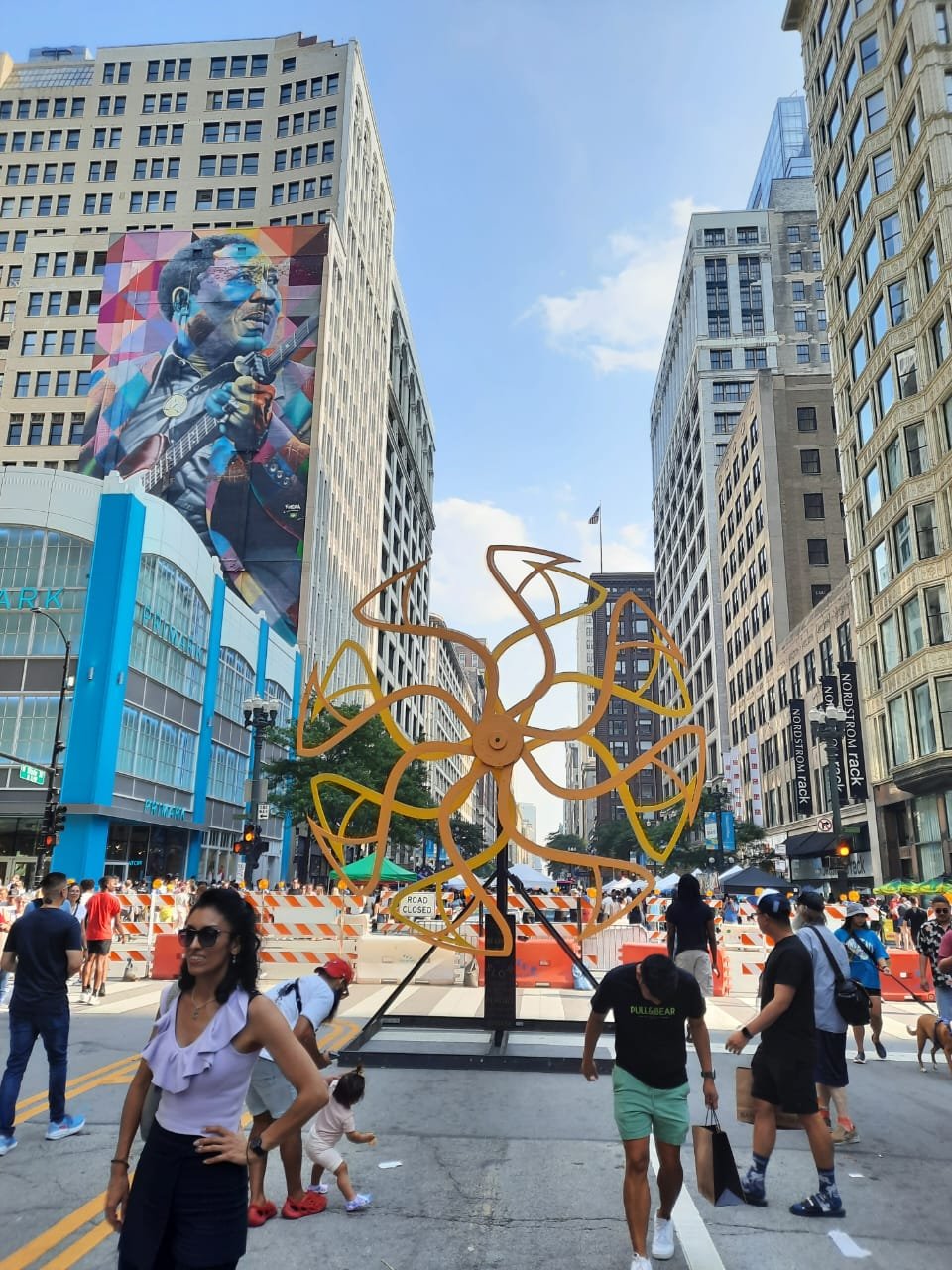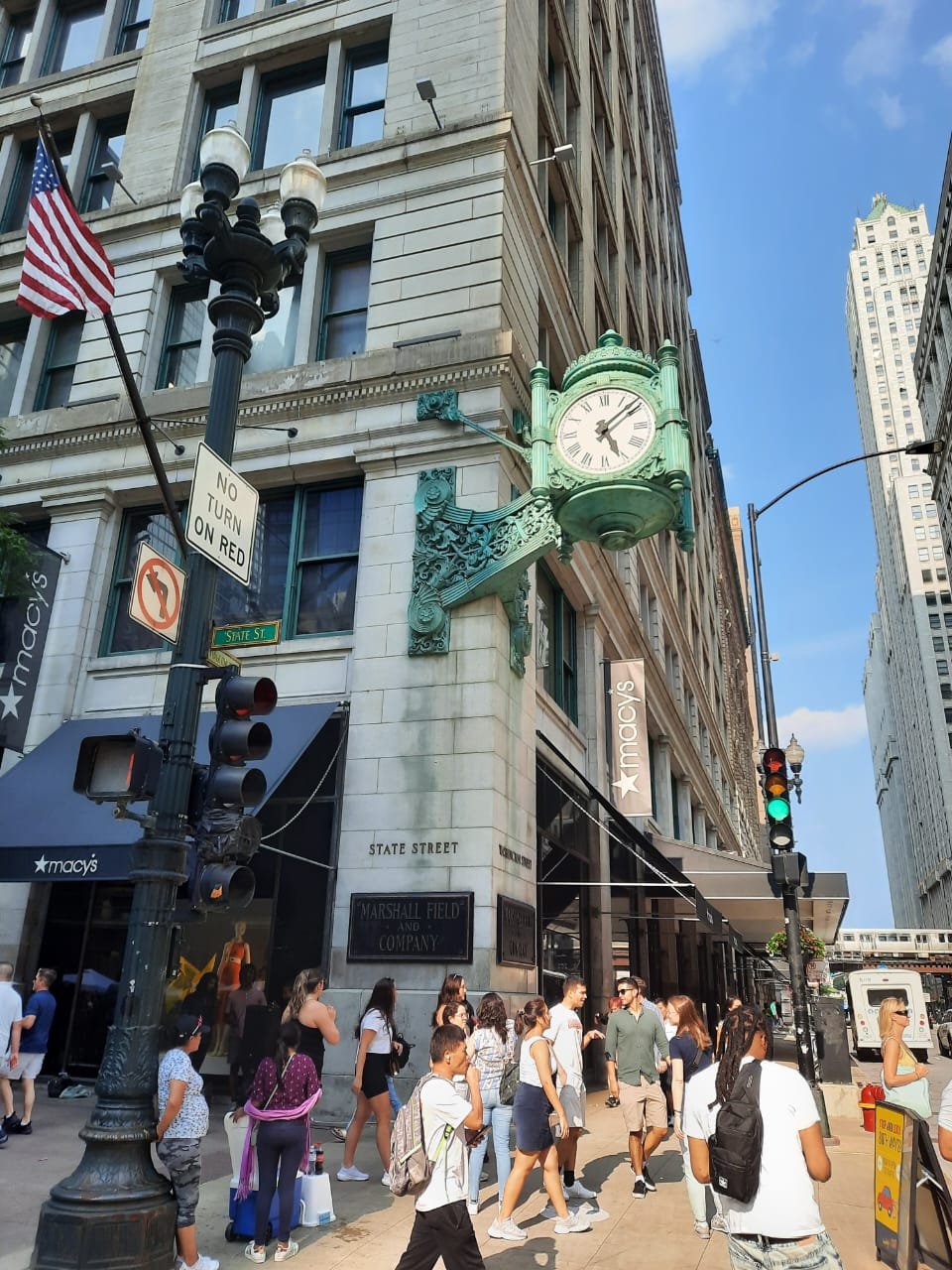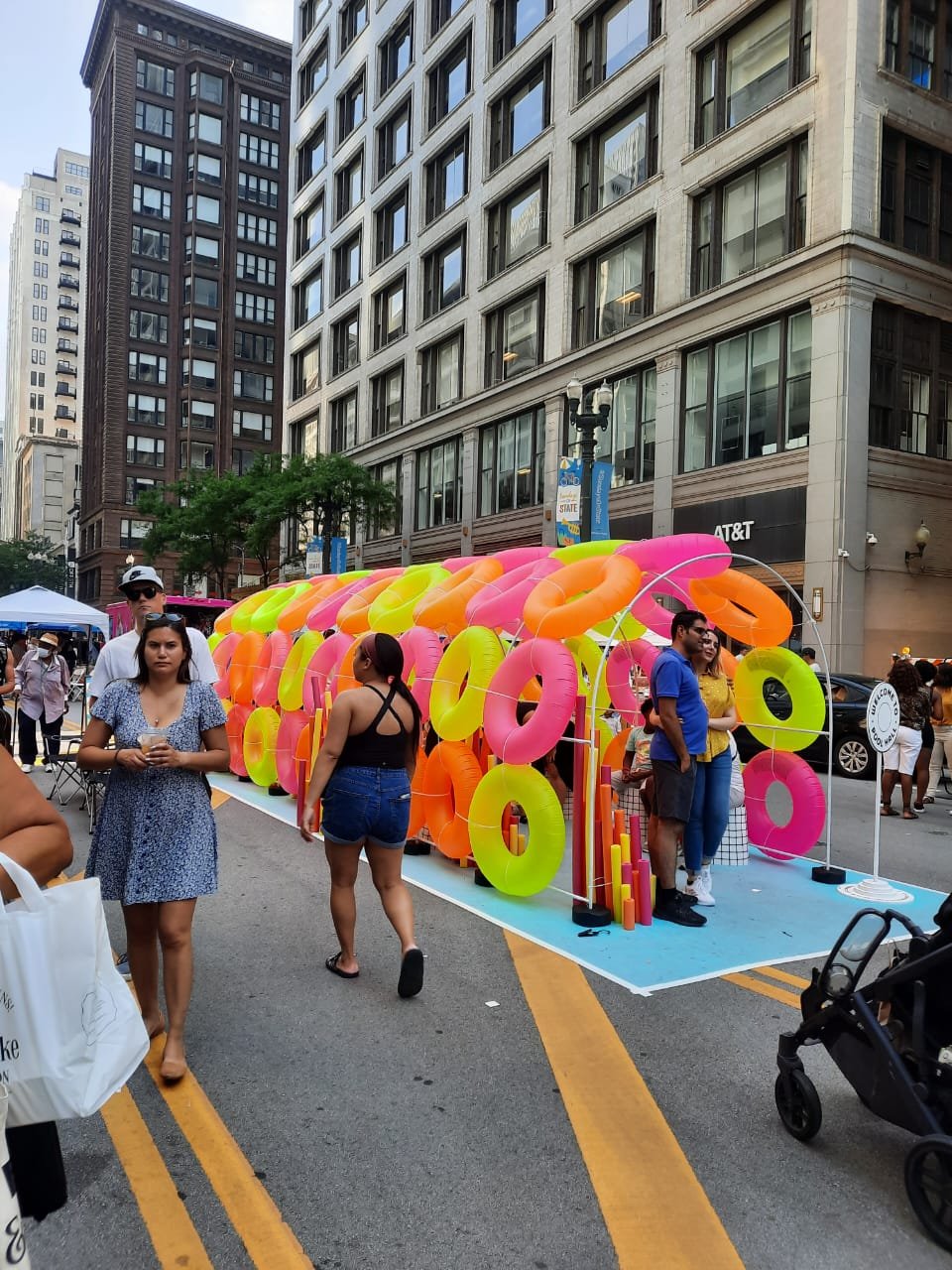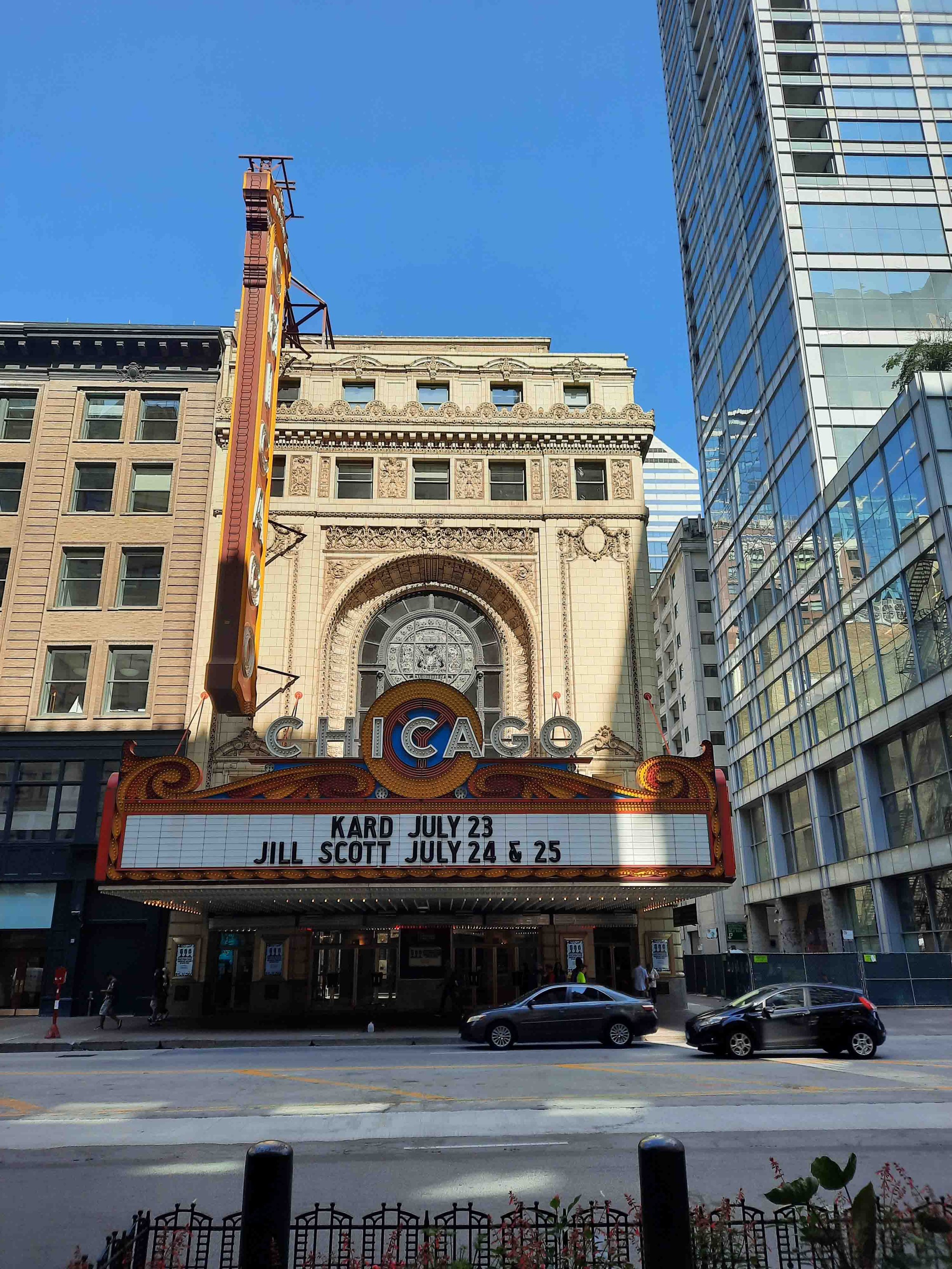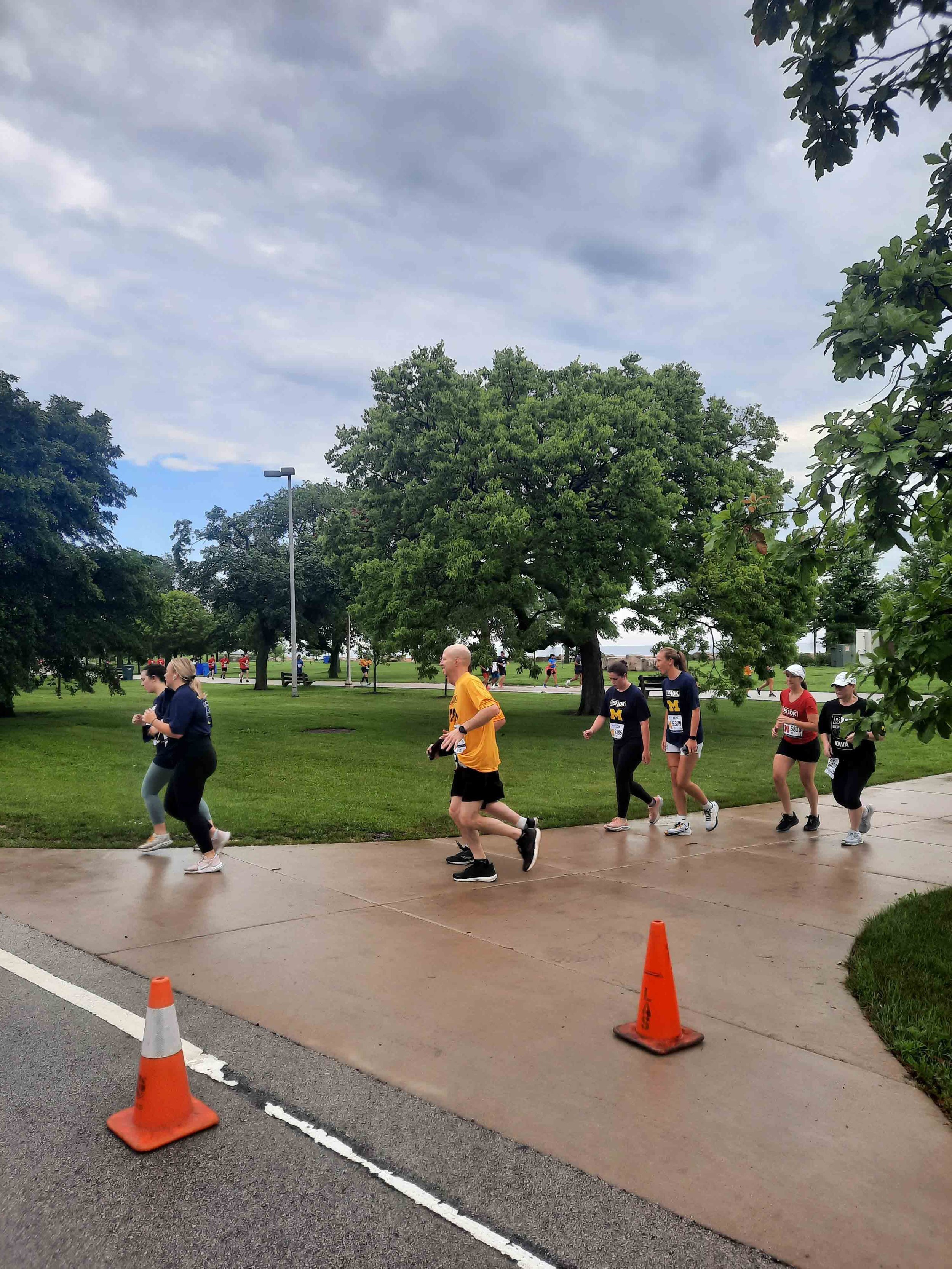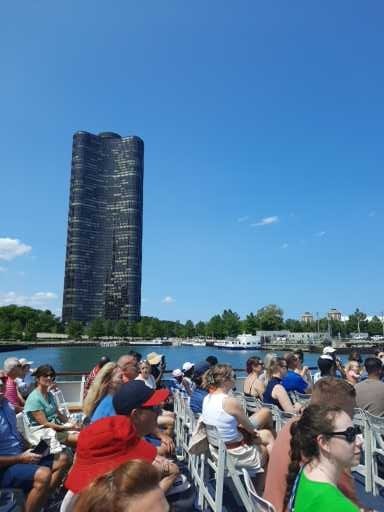The blue sky reflects off glass skyscrapers in the city of Chicago where beautiful buildings can be seen
One of the main reasons I wanted to visit the Windy City was to experience the architecture and see the work of many of the architects I learnt about in my studies, including: Ludwig Mies van der Rohe, Phillip Johnson, Frank Lloyd Wright and Louis Sullivan. I did both a walking architecture tour and the very popular architecture river cruise - both were very informative, although I feel like I only scratched the surface, there are many layers to uncover in this city. Buildings from several architectural styles were highlighted: classical, modern, post-modern, brutalist, art deco and the tour guides did a great job of going into detail and explaining certain highlights of several of the buildings.
It seems the city had a second chance to rebuild itself after the Great Fire of 1871 and it was interesting to look back on the history of the city and see how it has developed over time.
Robie House
Possibly one of the most famous architects to come out of Chicago is Frank Lloyd Wright known for fathering the Prairie Style. He designed many residential homes, his most iconic probably Falling Water, but according to the Frank Lloyd Wright Trust website “Robie House sparked a revolution in residential architecture that still reverberates today and is considered one of the most important buildings in architectural history. The house is a masterpiece of the Prairie style and a forerunner of modernism in architecture.”
Frederick C. Robie House by Frank Lloyd Wright, completed in 1910 and situated in Hyde Park, Chicago
The Rookery
One of the buildings I visited on the walking tour is known as ‘The Rookery’ and was designed by Daniel Burnham and John Root in 1888. The interior was remodelled in 1905 by Frank Lloyd Wright and the Insitute honouring his name is currently situated in the building.
One opinion is that the Ravens on the facade of the building resulted in it’s nickname ‘Rookery’
Interior of the Rookery with marble and gold leaf
190 South LaSalle Street
190 South La Salle Street is a beautiful example of a Post Modern building, designed by PHillip Johnson and John Burgee in 1987. While the outside of the building is nothing to write home about, the interior is opulent and the exaggerated scale is really something to behold.
Interior of office complex 190 South LaSalle with golden steps as interactive musical sculpture
The Marquette Building was also very noteworthy with it’s impressive Tiffany mosaic murals decorating the interior of the building as well as the dramatic Chicago Cultural Center. There is so much to discover, it was really memorable to explore.
A few more images of buildings below:
Further Reading:
https://www.flwright.org/tour/robie-house
https://cal.flwright.org/tour/rookery
https://www.architecture.org/learn/resources/buildings-of-chicago/building/190-south-lasalle/
https://gravelmag.com/famous-chicago-architects/
https://www.architectureadrenaline.com/famous-architects-in-chicago-20-of-the-greatest-designers-in-the-windy-city/





















